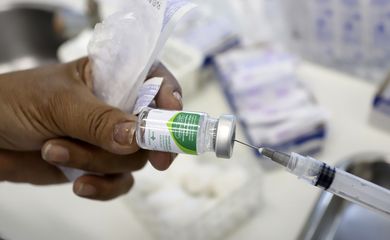Fiocruz bulletin signals an increase in SARG cases in 13 states

Almost half of the Brazilian states registered signs of growth in the long-term trend of cases of severe acute respiratory syndrome (SRAG). The data were released this Thursday (2), by the Oswaldo Cruz Foundation (Fiocruz), and refer to the epidemiological week from 21 to 27 November.
According to Fiocruz's InfoGripe Bulletin, 13 of the 27 federative units show signs of SRAG growth: Acre, Amazonas, Amapá, Bahia, Ceará, Federal District, Espírito Santo, Maranhão, Mato Grosso do Sul, Pará, Rio de Janeiro, Rondônia and São Paulo. Of these, the ones that draw the most attention are Pará, Ceará and Rio de Janeiro.
“In the national data, although it shows a slight growth, which may be compatible with a scenario of oscillation around a stable value, the analysis by age group indicates that it is an increase in all age groups below 60 years old. The analysis was carried out based on the data entered in the Information System for the Epidemiological Surveillance of Influenza (Sivep-Influenza) until November 22”, highlighted the bulletin.
According to researcher Marcelo Gomes, coordinator of InfoGripe, in the population aged 30 or over, growth is relatively small, being more expressive and present since November in children, adolescents and young adults aged between 20 and 29 years.
In the case of children aged up to 9 years, laboratory results associated with the cases continue to indicate a predominance of respiratory syncytial virus (RSV), which follows the trend of an increase in SARS in this age group. Among adolescents aged 10-19 years and young adults (20-29 years), they are mostly associated with covid-19.

capitals
The analysis concludes that 13 of the 27 capitals show signs of growth in the long-term trend (last six weeks): Aracaju, Belo Horizonte, Curitiba, Florianópolis, Fortaleza, Macapá, Manaus, Natal, Porto Velho, Rio de Janeiro, Salvador, São Luís and São Paulo.
However, explained Gomes, “just as it was highlighted for the states, the analysis of the temporal evolution by age group suggests that it is just a slight growth compatible with oscillation around a stable level, in general. In Rio de Janeiro, growth throughout November was concentrated in children and young adults (20-29 years old)”.
The increase in SARS cases among these young adults may be associated with an increase in cases of flu-like illness caused by the influenza A virus (flu). Gomes highlighted, however, that, in order to properly assess the laboratory results associated with recent cases, it is necessary to wait a few weeks for this information to be updated in Sivep-Gripe by the responsible health authorities (notifying health units or health departments).
Until the beginning of November, the majority of cases associated with the virus SARS-CoV-2 (covid-19) remained in this age group, as well as in other adults.
More in-depth information on the subject can be obtained from Fiocruz 's website.
Text translated using artificial intelligence.





